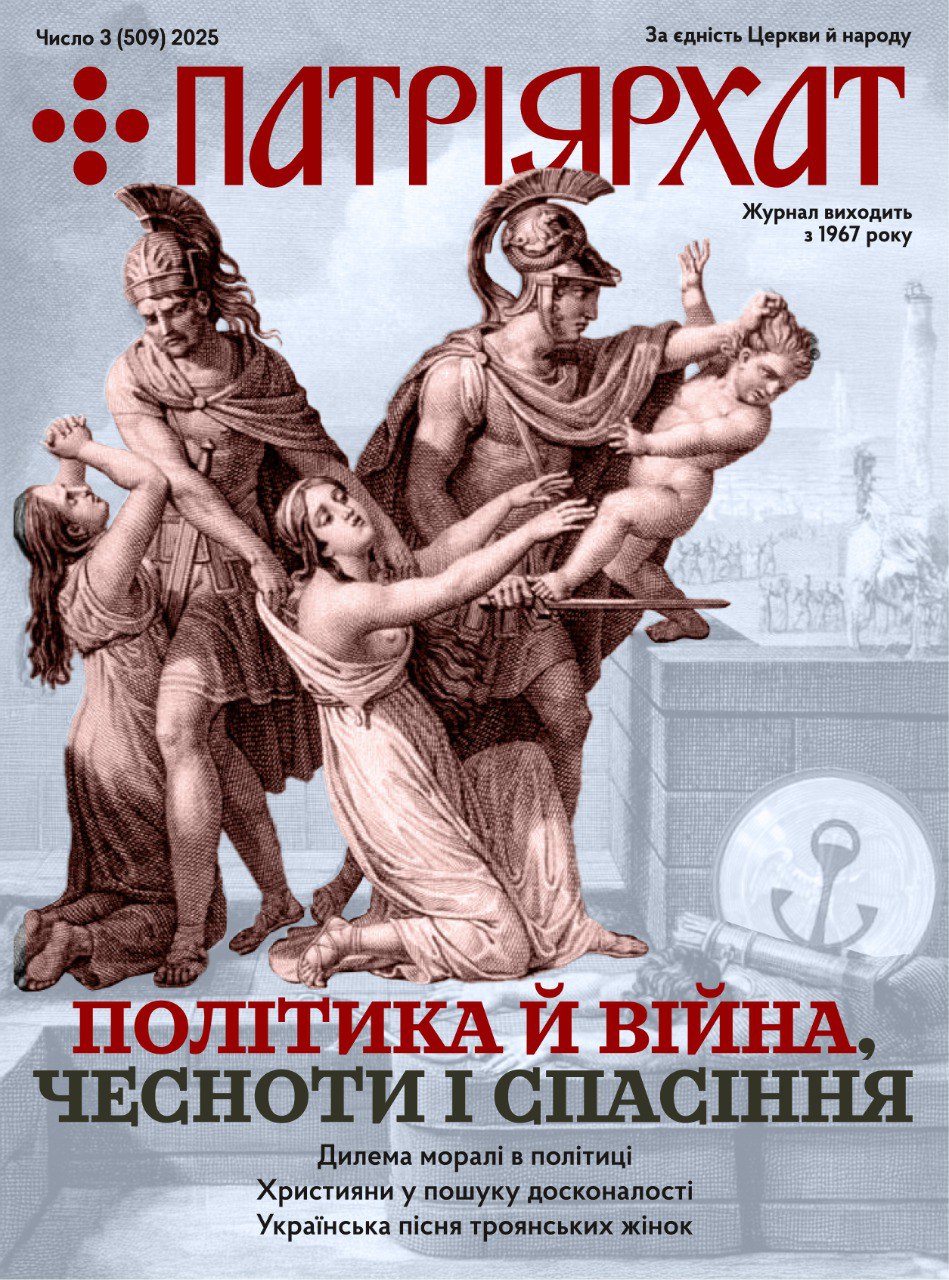East-West Digest
Documents and Comments Related to the Struggle for the Patriarchal Rights of the Ukrainian Catholic Church. Part 2. Collected and edited by I. Dmytriw, translated by W. Slez. Ukrainian Catholic Patriarchate (G.B.) 49 Linden Gardens, Notting Hill Gate, London W2 4HG. 1976.
This supplement is a welcome and useful addition to the first[1] and gives considerably more attention to the Catacomb church in Ukraine.
Again there is a useful historical introduction. It was as far back as 988 that Christianity was officially adopted in the territoy of Kievan Rus, 66 years before the great schism. One can understand the attitude of Ukrainians to Moscow which did not become a Patriarchate till 1589. Peter the Great adopted the name «Rossiya» for his empire — the word still surviving in the name of the Ruthenian Eastern Rite Catholic church, which lay within Hungarian influence and is still a separate church — an anomaly, says the pro-Patriarchal party, which would like to see it under their jurisdiction. One would like to hear Ruthenian Catholics views on this matter!
A useful list of Bishops shows the Ukrainians established in Brasil, Argentine and Australia as well as in the USA, Canada and Western Europe.
STILL A LIVING CHURCH
A short and interesting account is given of the tragic history of the Ukrainian church — the Catacomb church — since the Soviet invasion of 1939. Slipyi was actually lined up against a wall to be shot when the Bolsheviks retreated. However, rather conveniently, no reference is made to the Nazi occupation and what went on during this time — some things better forgotten, and a wonderful revival of religious life! The account is not entirely accurate — Bishop Theodore Romza, said to have been arrested with the other Bishops who unanimously refused to accept subservience to the Moscow Patriarchate, was very badly injured in a road ’accident’ in his diocese of Mukachiv in 1947, and died in hospital after a temporary recovery just as a new set of hospital staff replaced the previous one…The account emphasises that the Catacomb church of five million people is still very much a living church. A surprising amount of pastoral work is carried on and services held in secret. Hundreds of priests work quietly as civilians, consoling the faithful «Death tells the story of their existence; they are buried in the habits of their order.»
Undoubtedly the most valuable part of this publication is the first translation into English of the Articles pertaining to the Union with the Roman Church of 1595, accepted a few months later with minor modifications of Pope Clement VIII, who also issued the Decet Romanum Pontificem recognising the autonomous rights of the Eastern Rite Catholics and including the nomination of bishops by the Metropolitan of Kiev and Halych (Galicia). Collectively this is better known as the Union of Brest and is a document of the first importance, not only historically, but also in relation to the present discussions between our own Anglican churches and the Vatican. One can only say that the Union of Brest provides an exemplary model of a church maintaining almost all its basic doctrines and a very satisfactory measure of autonomy.
It is difficult to trace the exact political reasons behind the Union but it is obvious that the Eastern Rite Catholics were Orthodox and gave way on no major doctrinal issue apart from accepting purgatory. They had very much the best side of the deal, maintaining their own services, liturgy in their own language, married clergy, Communion in both kinds and the belief in the procession of the Holy Spirit from the Father alone. Bishops were to be ordained by the Metropolitan and not by Rome. Out of four candidate bishops presented, the Pope had the right to select one as Metropolitan. The Metropolitan and bishops were to take their place in church councils alongside the Latin clergy.
The Uniates showed no tolerence towards ’nonconformists’ — that is, against those wanting to belong to the Latin Rite Catholic church, and against those («Greeks and foreigners») who remained faithful to the Orthodox church. All monks were to belong to one rite — as in the Orthodox Church; this was to protect them from an influx of «Latin» orders.
Other clauses are of more local application and show that there were considerable disputes about church lands which had been taken over by the laity (not uncommon in the sixteenth century) and with «disobedient» priests who seem to have been under the influence of influential and equally disobedient laity.
The Union of Brest helps one to understand the pride of the Ukrainians who have kept so much that was precious and integral to their beliefs, and to sympathise with their objections to Vatican meddling or forced Romanisation. Naturally, it did not suit everyone; there is still a strong Orthodox church.
UKRAINIANS’ BETRAYAL BY FOREIGNERS
A brief document. The Declaration of the Sacred Congregation for Eastern Catholic Churches, of 1970, is also important. We must however remember that it applies to other Eastern churches (e.g. the Melkites). It is an «ad interim» document which accepts that very many of the Christians concerned are forced to live outside the territory of the Patriarchates in exile of diaspora. Bishops from outside the territory of the Patriarchates can take an active part in Synods, including the election and other matters within the Synods of their own rite. Cardinal Slipyi seems to have made full use of his privilege — rather more so than the Vatican would like.
There are two impassioned speeches, the first by Bishop Ivan Prashko at a concert in honour of Holy Уеаг. He refers to Ukrainian sufferings and her betrayal at the hands of other powers, and to use for the first time in history of the words «Patriarch of Halych» by Slipyi’s signature. It is ironic that Christians in the Ukraine are forbidden from praying for the Pope in Rome, while «We are apparently prohibited from praying for our Pastor Joseph, Partiarch of Kiev and Halych and all Rus.» Throughout the documents Slipyi’s remarkable record as a living confessor for his church is emphasised.
ALL DENOMINATIONS
Cardinal Slipyi’s Pastoral Letter ‘For Unity in Christ’ is a quite remarkable appeal to Ukrainian unity of аіГ denominations within one church! Relations between Ukrainian Orthodox (free to worship under their own jurisdiction outside the USSR) and the Eastern Rite Catholics are generally cordial. There are no fundamental dogmatic differences and Slipyi reminds his readers of the time following the First World War when an independent Ukrainian Orthodox church existed in Ukraine itself and mutual relations were very good. During 1973, the KGB arrested Mr. Roman Vasylyn, a worker in a Lvov publishing house, while he was delivering copies of a prayer book and a collection of Christmas carols to Ivano Frankivsk. He broke down under intense KGB interrogation and subsequently further arrests were made and harsh sentences imposed on Catholic priest Ivan Kryvy, Orthodox priests Anton Sokolyan and Mykola Synyshyn and several printing workers. These are some of the forgotten martyrs of the Catacomb church. Why do we not hear more of them?
Slipyi’s hopes of the evangelical churches joining his particular Ukrainian Church under the leadership of the Patriarch seem widely unrealistic. Baptist-Evangelicals are stronger in the Ukraine than in any other part of the USSR but are notalsly apolitical, and, alas, limit their concern to their own sufferings. Slipyi makes positive suggestions — united sction of the Orthodox church and his own on a liturgy using exactly the same language and also a new common translation of the Scriptures. The whole is a most impassioned appeal for Ukrainian unity.
The letter from the Association of Ukrainian Women in Great Britain to Bishop A.E. Hornyak reflects the pastoral difficulties which have.arisen here partly because of Hornyak is one of several bishops who have remained faithful to the Vatican. They claim that religious and cultural life is suffering and the young are disenchanted by the conflict. As Slipyi is touring around visiting Ukrainian communities all over the world and has sent some of his own priest supporters to Britain to minister to «deprived» Catholics, one can imagine just how unedifying the whole situation is becoming.
Mr. Norman Cousins revealed that he was authorised by Pope John XXIII to tell the representatives of the Soviet Government that the Holy Father was hopeful that «the imprisoned bishop» who was then 70, at the time of his release and exile from the USSR, «might spend his few remaining years at some distant seminary.»
The Vatican got rather more than they bargained for.
[1] See The Eastern Rite Catholics at home and abroad’ East- West Digest. Vol. 13. No. 7. April 1977. Pp. 266-271.

